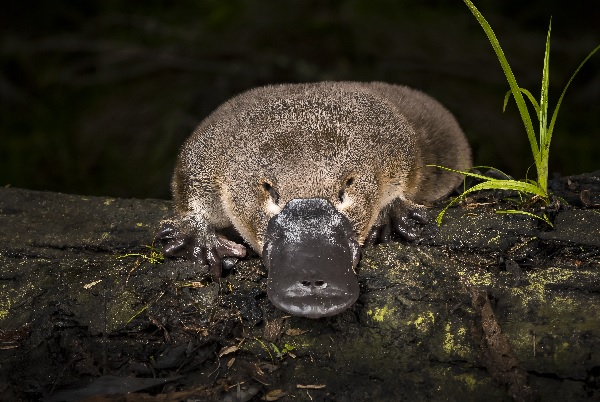
Platypus, Yarra River by Doug Gimesy
The platypus is a truly unique animal. It doesn’t have any close relatives and, along with the echidna, it is part of an exceptional group of mammals which lay eggs, known as monotremes.
With its bill, fur and webbed feet, the platypus was originally thought by scientists to be a taxidermist’s trick. But appearances can be deceiving and there are many common misconceptions about the platypus.
Firstly, let’s take a closer look at the famous platypus bill. Although likened to a duck’s, the platypus bill is quite different.
If you were ever lucky enough to touch a platypus bill, you’d discover that, unlike a duck’s, the platypus bill feels rubbery and is covered by smooth skin with a soft, suede-like texture.
The skin of the bill contains thousands of specialised receptors used to detect either tiny changes in water pressure or the electricity produced when the muscles of prey contract. These receptors work together to help the platypus obtain food – for example, the difference in the time required for a change in water pressure and an electrical signal to be received by a platypus after a freshwater shrimp flicks its tail is believed to be used by the platypus to judge the distance to the shrimp. This use of electroreception hugely increases the range of conditions when a platypus can forage successfully, including in murky water or at night.
The platypus looks cute and cuddly, but did you know it’s one of just a handful of mammals known to be venomous? The venom is produced by a gland in the male platypus’s upper thigh and delivered by a pointed spur, about 15 mm long, located on each hind ankle.
And the platypus is quite a voracious carnivore. With a diet consisting of a variety of aquatic-macroinvertebrates (worms, shrimp, yabbies and larvae), an average platypus will eat the equivalent of approximately 20 per cent of its body weight each day. Multiply that by four for a lactating platypus which have been known to eat the equivalent of 80 per cent of their body weight each day – making river health and food availability a key to breeding success.
The survival of the platypus is intrinsically linked to the health of our waterways. Extensive modifications to Victoria’s waterways and reduced water quality have taken their toll on the platypus and unfortunately it is currently classified as ‘near threatened’ by the International Union for Conservation of Nature. Water for the environment is critical for platypus to maintain and re-establish healthy populations.
How do environmental flows support platypus?
- Water for the environment helps to maintain and increase platypus populations by providing places for platypus to breed and feed and by assisting young platypus to disperse.
- Environmental flows increase water depth which facilitates platypus movement between localised habitats and improves their foraging opportunities.
- Water deliveries improve water quality which contributes to the quantity of food and habitat for platypus. If a river is in drought or has very low flows, it won't attract enough insects and other food for platypus to breed and survive.
To find out how water for the environment is being used to support platypus across Victoria go to the rivers and wetlands section of the VEWH website, click on the link for the relevant waterways, then look for watering action with this symbol
![]()
More information
For further information about platypus visit the Australian Platypus Conservancy.
If you’d like to see a platypus up-close, watch this fascinating platypus video from Glenelg Hopkins CMA. Water for the environment supports platypus in the Glenelg River by helping to connect deep pools in the river, providing the platypus with places to rest, breed and feed, as well as opportunities for juveniles to move to the lower sections of the river.
Article reference: Australian Platypus Conservancy